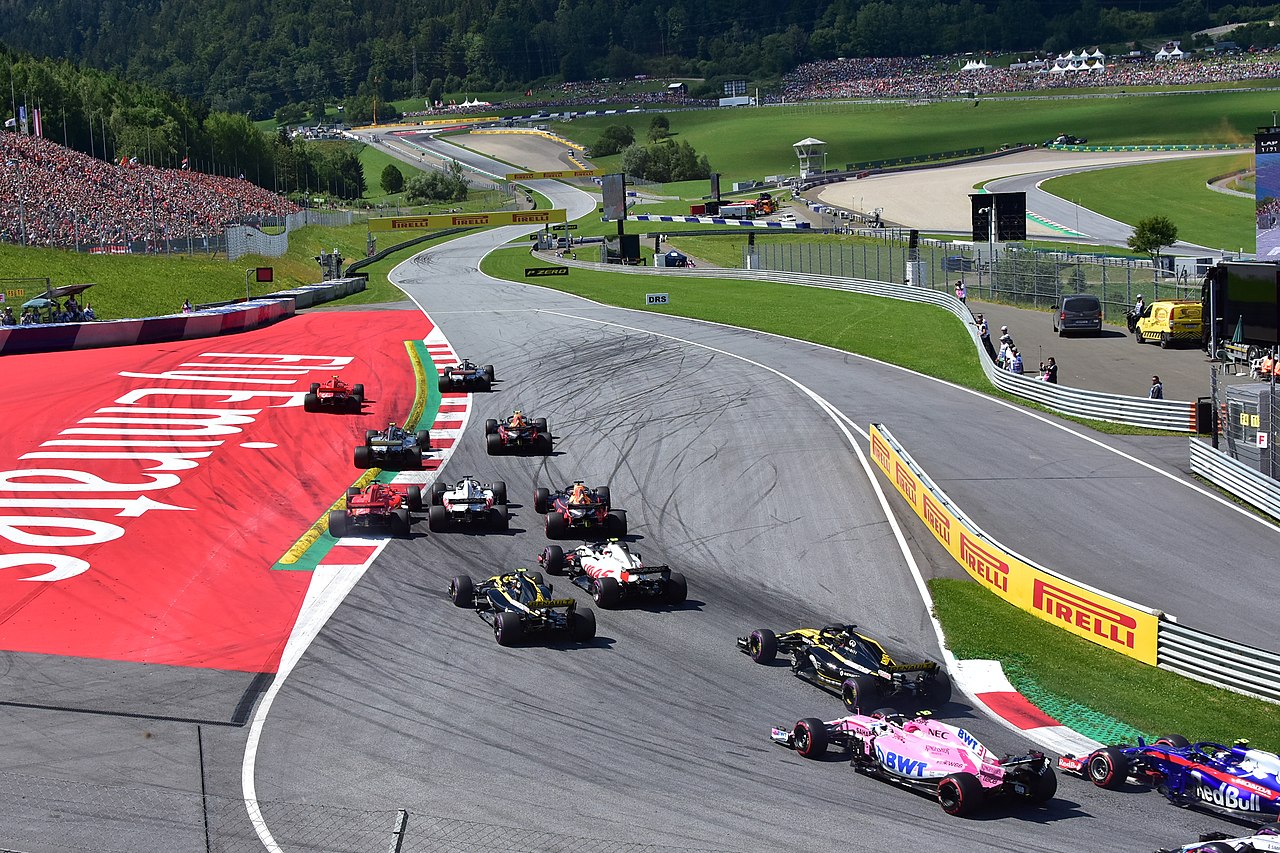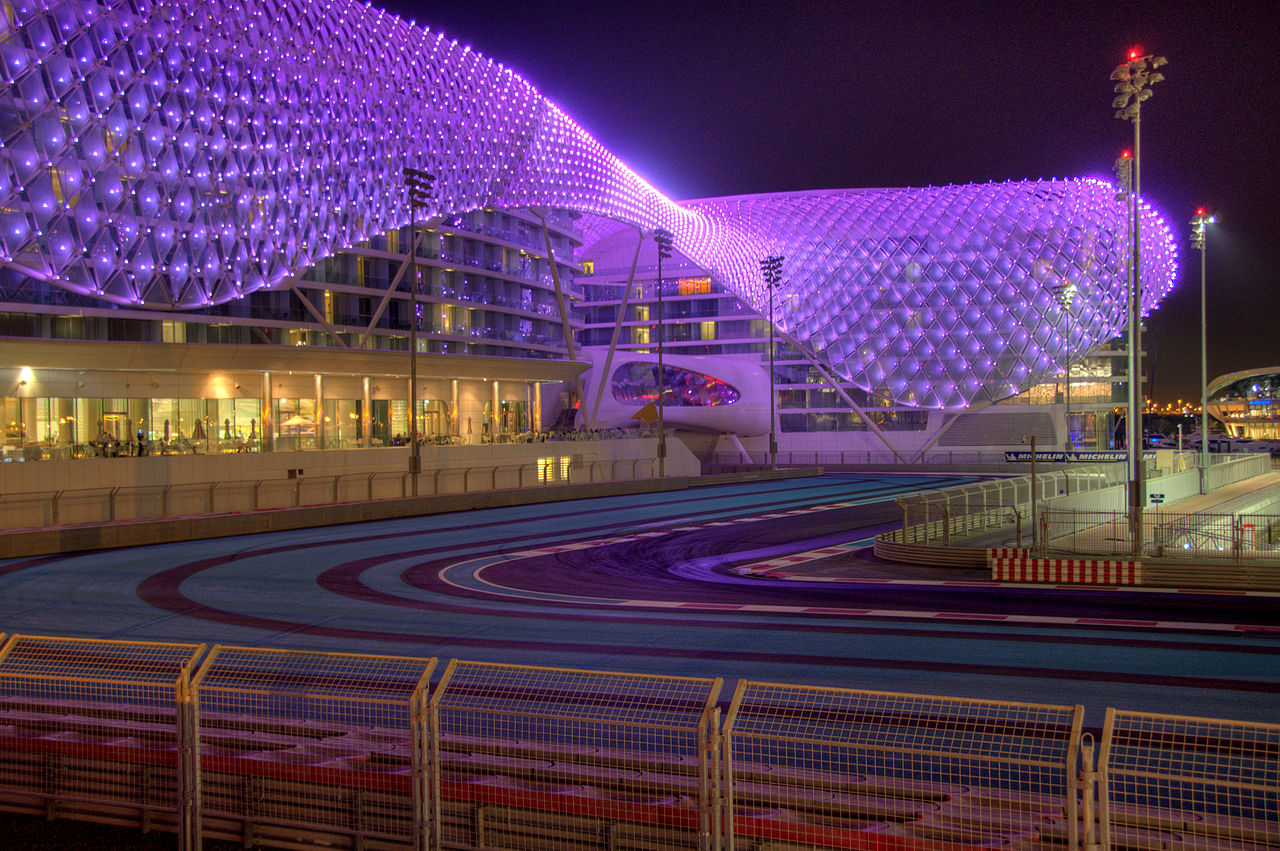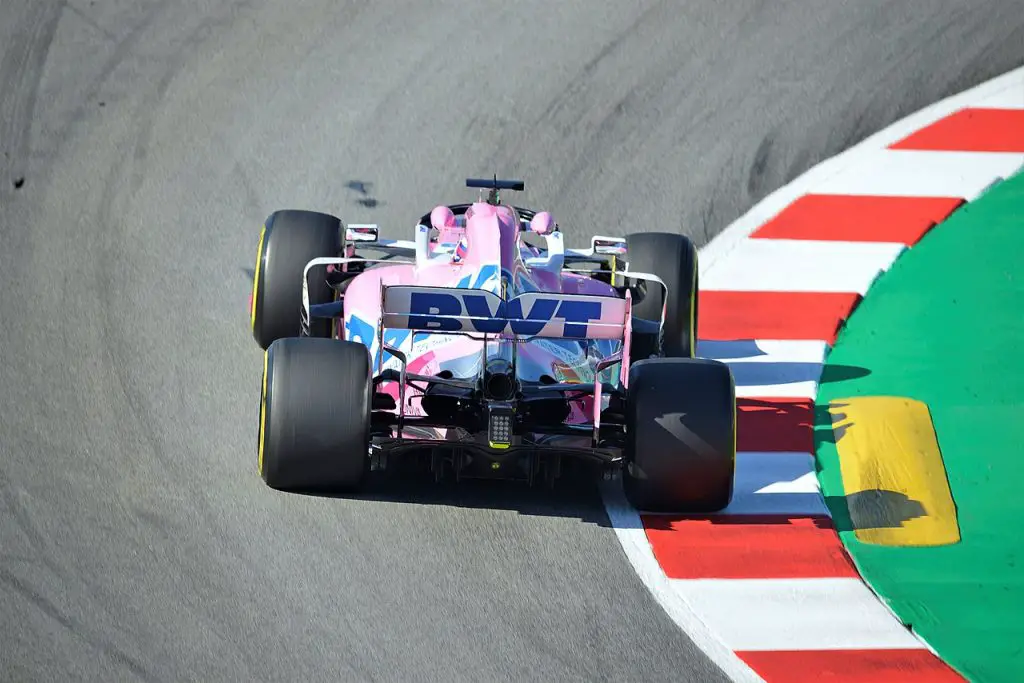The 2020 Formula 1 season was a season like no other. The impact of the global pandemic led to some interesting rare occurrences on the 2020 schedule. We take a look at the statistical quirks of the 2020 F1 calendar!
The start of the 2020 season was like any other: the teams, drivers and media descended on Melbourne for the first race of the season just as they had done in all but two of the previous 24 years. However, there were already murmurings that this would be a season unlike anything we had seen before: the Chinese Grand Prix had been postponed due to the coronavirus pandemic, while the Bahrain Grand Prix was to go ahead without any fans in attendance.
The Australian Grand Prix came to a halt before any on-track action took place. A positive coronavirus test for a member of McLaren led to the team’s withdrawal, and the race weekend was cancelled soon after. Instead, Albert Park will have to wait until 2021 to host its 25th World Championship race, while 2020 became the first season to not feature the Australian Grand Prix since 1984.
CANCELLATIONS AND POSTPONEMENTS
The cancellation of the Australian Grand Prix was only the tip of the iceberg. The following day, both the Bahrain and Vietnam Grands Prix were postponed. Bahrain would eventually go on to host two races toward the end of the year, while the Vietnam race was officially cancelled in October. The Hanoi Street Circuit was set to be the 72nd venue to have hosted a World Championship Formula 1 race, but the future of the event is now uncertain, with the Vietnam Grand Prix having been omitted from the 2021 schedule.

Less than a week later, more postponements and cancellations followed. The biggest news of all was the cancellation of the Monaco Grand Prix, this being the first time that the prestigious event would not appear on the calendar since 1954. The Spanish Grand Prix was postponed – and eventually took place in August – while the highly anticipated return of the Dutch Grand Prix was pushed back another year to 2021. When Zandvoort does rejoin the calendar next season, it will be 36 years since F1 last visited the track – the longest gap between two Grands Prix at a venue.
The Canadian Grand Prix was postponed in April and, though there were hopes to run the event later in the year, it was eventually cancelled. With the United States and Mexico City Grands Prix also not going ahead, 2020 is the first F1 season to not feature a round in North America since 2009. 2009 was the last season to not feature a trip to Montreal, 2011 the last to not feature a United States Grand Prix, and 2015 the last with no Mexican race. Meanwhile, the Brazilian Grand Prix did not appear on the World Championship calendar for the first time since 1972 and meant that F1 failed to visit South America for the first time since 1971 (the Argentine Grand Prix took place in 1972). This was the first Formula 1 season with no Grands Prix on either American continent since 1952, though thanks to the Indianapolis 500 being a round of the World Championship between 1950 and 1960, 2020 is the first season in which no round has taken place in either North or South America.
Before the 2020 season eventually began, there would be more races officially cancelled. The French Grand Prix, which was set to take place at Circuit Paul Ricard for a third consecutive year, was called off in April. F1 announced the cancellation of the Azerbaijan, Singapore and Japanese Grands Prix in a statement in June. The two street races of Azerbaijan and Singapore would not take place for the first time since the beginning of their tenancies on the calendar (2008 for Singapore, 2016 for Baku). A season which was expected to feature five street circuits became only the second in F1 history, and the first since 1953, to not feature any street circuits (though you could argue that the Spa Francorchamps and Reims circuits used in 1953 were in fact street circuits, as they took place on public roads). The cancellation of the Japanese Grand Prix made 2020 the first season to not feature Suzuka on its schedule since 2008, and the first to not feature a trip to Japan since 1986.
THE REVISED SCHEDULE
When the revised 2020 calendar was announced, it was done so in stages. The first eight European rounds were announced in June, before races at Sochi Autodrom and Mugello were added on 10th July. A further Italian race at Imola, along with a return to the Nurburgring and a first visit to Portimao were confirmed later in July, while the final four races of the season – in Turkey, Bahrain and Abu Dhabi – were confirmed in August. The final announcement also included confirmation that the Chinese Grand Prix would not take place in 2020, marking the first time F1 has not visited the Shanghai International Circuit since it joined the calendar in 2004.
UNCHARTED WATERS
The delayed season began with the Austrian Grand Prix at the Red Bull Ring. Austria became the eleventh different country to have hosted the first race of a season, while the Red Bull Ring became the fourteenth different venue to have hosted the season-opening Grand Prix. Read more: IN STATS: F1’s Season Opening Races. Formula 1’s 2019-20 winter break was supposed to be the shortest in the last 38 years, but instead became the longest in 55 years and the third longest in the sport’s history. There was a gap of 217 days between the 2019 Abu Dhabi Grand Prix and the 2020 Austrian Grand Prix. The season began on 5th July, making it the latest date on which a season has begun – beating the previous record of 27th May, which is the date on which the season-opening 1951 Swiss Grand Prix was held. Read more: Formula 1’s Longest Off Seasons.
While the Austrian Grand Prix was the first ever F1 race to take place behind closed doors – something which would become a common theme in 2020 – the Styrian Grand Prix one week later marked the first time that F1 has raced at the same venue on two consecutive weekends. The Red Bull Ring became the first venue to host multiple races in a season – with Silverstone and Bahrain International Circuit following suit later in the year. 2020 is the first season where F1 has raced in the same country twice in a year since 2012, when Spain hosted both the Spanish Grand Prix and the European Grand Prix. The Austrian and Styrian Grands Prix also marked the first time that a country has hosted two consecutive rounds of the World Championship since Australia hosted the season-closing 1995 race and the season-opening 1996 race. This was an occurrence which had happened only five times prior to 2020 – but happened three times during this season. Read more: Consecutive F1 Races Held In The Same Country. With just seven days between the Austrian and Styrian Grands Prix, it was a new record for the fewest number of days between two races at a circuit, the previous record being 147 days between the 2000 and 2001 Malaysian Grands Prix, held at the Sepang International Circuit.

The opening three races were the first of four triple headers during the 2020 season, with Formula 1 racing on three consecutive weekends on four separate occasions. Prior to 2020, there had been only one previous occasion where F1 raced on three consecutive weekends. It happened in 2018, when the French, Austrian and British Grands Prix were held on successive Sundays.
A EUROPEAN SUMMER
The British Grand Prix took place in August, which was the first time in World Championship history that the British Grand Prix has been held in August, and the first time that the British Grand Prix has been held in August since the event was first held at Brooklands on 7th August 1926. In F1’s 70th anniversary year, the sport raced twice at Silverstone. The 70th Anniversary Grand Prix marked the first time that a Formula 1 race did not have a geographical name, and the first time that there had been two races in the United Kingdom in a single season since 1993, when Silverstone played host to the British Grand Prix and Donington Park hosted the European Grand Prix.
The Spanish Grand Prix followed, with the 2020 event marking the first time that the race has been held in August – both in Formula 1 history and in the event’s history, which dates back to 1913. It was also the first time that a Formula 1 race has been held in Spain in August since the 2009 European Grand Prix, which took place at Valencia Street Circuit.
ITALY REACHES 100
The 2020 season featured three races in Italy. The 1982 season is the only other year in which F1 has raced in the same country on three separate occasions. In 1982, it was the United States which hosted three events, with the United States Grand Prix West, the Detroit Grand Prix and the Caesars Palace Grand Prix. At the 2020 Italian Grand Prix, F1 raced at Monza for a 70th time, making it the first circuit to have hosted seventy rounds of the World Championship. Meanwhile, Mugello became the 72nd circuit to have hosted a World Championship Formula 1 race and the fourth circuit in Italy to have hosted the sport. The Tuscan Grand Prix marked the first time that F1 had raced in Italy twice in a year since 2006. In addition to the Italian Grand Prix, F1 also visited Imola in 2006 for the San Marino Grand Prix – and Imola returned to the schedule for the 2020 season. The Emilia Romagna Grand Prix was F1’s first two-day weekend, with Friday Practice scrapped for the event. The Imola race marked the 100th Formula 1 weekend to be held in Italy – Italy becoming the first country to reach the milestone. Read more: Countries Which Have Hosted The Most F1 Races.
RETURNING CLASSICS
October and November saw Formula 1 revisit old stomping grounds at the Nurburgring, Imola and Istanbul Park, and return to Portugal for the first time since 1996. The Eifel Grand Prix – which was F1’s first visit to the Nurburgring since 2013 – took the unusual honour of becoming the fourth title used for an F1 race at a single circuit. No other circuit has hosted races with four different names. In addition to the Eifel Grand Prix, the circuit had previously hosted the German Grand Prix, the European Grand Prix and the Luxembourg Grand Prix. Likewise, the Emilia Romagna Grand Prix, held at Imola three weeks later, was the third title to be used for a race at Imola, after the Italian Grand Prix (in 1980) and the San Marino Grand Prix (1981-2006). The Red Bull Ring, Silverstone and Bahrain International Circuit became the eighth, ninth and tenth venues to have hosted F1 races with different names. Read more: Circuits Which Hosted F1 Races With Different Titles.
While the gap between the 2006 San Marino Grand Prix and the 2020 Emilia Romagna Grand Prix stood at 5,306 days – the sixth longest between Grands Prix at a single circuit in F1 history, F1’s return to Turkey for the first time since 2011 marked 3,479 days between races at Istanbul Park – the thirteenth longest in F1 history.

A NEW PORTUGUESE VENUE
The Portuguese Grand Prix returned at Algarve International Circuit, which became the 73rd different venue to host an F1 race. The day of the 2020 Portuguese Grand Prix marked 8,799 days since the last race in the country – the second longest gap between World Championship Portuguese Grands Prix. Strangely, the longest gap was only 35 days longer, between the 1960 and 1984 events. Algarve International Circuit was the fourth different circuit to have hosted the Portuguese Grand Prix, after Circuito da Boavista, Circuito de Monsanto and Estoril.
With Portimao becoming the second brand new venue on this year’s calendar after Mugello, 2020 becomes the first season in which two new circuits have appeared on the calendar since 2008, when F1 visited Valencia and Singapore for the first time. 2020 is the seventeenth season in which multiple new venues have joined the calendar. It also happened in 2004, 1991, 1986, 1984, 1978, 1976, 1973 (3), 1970, 1968, 1967 (3), 1964, 1959 (3), 1952, 1951, 1950 (7). Both Mugello and Portimao join a list of ten other circuits which have hosted only a single round of the World Championship.
CURTAIN CLOSERS
The 2020 Bahrain and Sakhir Grands Prix marked the first time that F1 has held consecutive night races, while the addition of the season-closing Abu Dhabi Grand Prix marks the first time that the sport has raced under floodlights for three successive weekends. The Sakhir Grand Prix took place on the shorter Outer Circuit layout of Bahrain International Circuit, making it the third different layout of the track to have hosted an F1 race. As well as the Grand Prix layout, F1 also used the Endurance Layout in 2010.
The Abu Dhabi Grand Prix, on 13th December, is the third latest date on which a season-closing Grand Prix has taken place, surpassed only by the 1962 South African Grand Prix (29th December) and the 1963 South African Grand Prix (28th December). Read more: 5 Latest Ends To Formula 1 Seasons.
In all, the 2020 season featured the fewest races since 2009, with seventeen, but it remains an impressive feat that the sport was able to go ahead at all in such an unusual year. Unusual though it may have been, the shorter season did not curtail Lewis Hamilton and Mercedes’ domination of the sport. Despite there being fewer races, Hamilton wrapped up the title with three races to spare, making 2020 the first season to feature three dead rubber rounds since 2015.
Header image: Alberto-g-rovi, Wikimedia Commons / CC BY 3.0.

